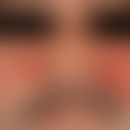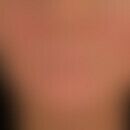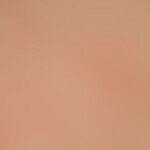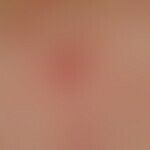Synonym(s)
HistoryThis section has been translated automatically.
DefinitionThis section has been translated automatically.
Chronic inflammation of the hair follicles by the yeast fungus (Malassezia spp.; esp. Malassezia globosa; s.a. Malassezia furfur; s.a. Pityrosporum). Common in long-term continuous or recurrent antibiotic-treated patients (in a larger observational study, this was > 75% of patients who had previously treated acne with long-term antibiotics - Prinaville B et al. 2018). Also in immunosuppressed patients.
You might also be interested in
EtiopathogenesisThis section has been translated automatically.
Microbiotic imbalance (of the skin) due to frequent antibiotic prior therapies (e.g. in women due to recurrent cystitis). Immunosuppression due to viral infections (e.g. HIV infection) or immunosuppressive therapies.
ManifestationThis section has been translated automatically.
w>m (not secured!)
Adult age (20-50 years); also described in (immunocompetent) infants and toddlers.
Frequently occurring in patients with long-term glucocorticoid, antibiotic or immunosuppressive therapy.
LocalizationThis section has been translated automatically.
Mainly located on the back in the seborrhoeic zones; less frequently in the centrofacial parts of the face.
ClinicThis section has been translated automatically.
Mostly (not always) clear signs of seborrhoea; frequent condition after acne vulgaris.
Clinically, there are disseminated, follicular, inflammatory, red, itchy papules 0.2-0.4 cm in size, more rarely also papulopustules. There are also smaller skin-coloured epithelial cysts. Healing with crust formation. More than half of the patients suffer from marked pruritus.
Pathogen detection in direct preparation, in culture or in histological section (PAS staining).
HistologyThis section has been translated automatically.
Serial sections and PAS staining usually show dilated follicular infundibula with overlying parakeratotic keratinization. In the upper parts of the follicular excretory ducts (sometimes also in the deeper parts) numerous PAS-positive fungal elements. Perifollicular mostly strong lymphocytic, occasionally also neutrophilic infiltrate.
Differential diagnosisThis section has been translated automatically.
Complication(s)(associated diseasesThis section has been translated automatically.
In rare cases, Malassezia sepsis (causative agent: M. pachydermatis; M. furfur) may occur in long-term immunosuppressed patients and in parenterally fed newborns or premature infants (catheter-associated transmission; Iatta R et al. 2014).
External therapyThis section has been translated automatically.
Remove any crusts with 2-5% salicylic acid ointment(e.g. Salicylvaseline Lichtenstein, Salicylic Acid Ointment 2-5% (NRF 11.43.)) or grease-moist dressings. Wash off with quinolinol (e.g., quinosol 1:1000).
Antifungal treatment with broad-spectrum antifungal as solution/spray e.g. 1% clotrimazole solution (Fungizid-ratiopharm Pumpspray, Clotrimazole Solution Hydrophil 1% (NRF 11.40.).
Alternatively: multiple washes with antifungal shampoos (e.g. Epi-Pevarayl® PV).
Internal therapyThis section has been translated automatically.
Antimycotic therapy with ketoconazole (e.g. Nizoral) once/day 200 mg p.o. for 7-14 days (Prindaville et al. 2018)
Alternatively itraconazole (e.g. Sempera) 1 time a day 200 mg p.o. for 7-14 days.
Remember! In many cases chronic course, so that the systemic therapy scheme has to be repeated after a therapy-free interval (3 months)!
Progression/forecastThis section has been translated automatically.
Chronic course with resistance to therapy.
LiteratureThis section has been translated automatically.
- Anane S et al (2013) Malassezia folliculitis in an infant. Med Mycol Case Rep 2:72- 74
- Crespo Erchiga V et al (2002) Malassezia species in skin diseases. Curr Opin Infect Dis 15: 133-142
- Faergemann J et al (2001) Seborrhoeic dermatitis and Pityrosporum (Malassezia) folliculitis: characterization of inflammatory cells and mediators in the skin by immunohistochemistry. Br J Dermatol 144: 549-556
- Iatta R et al. (2014) Bloodstream infections by Malassezia and Candida species in critical care
- patients.Med Mycol 52:264-269.
- Mota R et al (2015) Malassezia folliculitis in an immunosuppressed patient. Dermatologist 62: 725-727
- Pedrosa AF et al (2014) Malassezia infections: a medical conundrum. J Am Acad Dermatol 71:170-176
- Potter BS et al (1973) Pityrosporum folliculitis. Report of seven cases and review of the Pityrosporum organism relative to cutaneous disease. Arch Dermatol 107: 388-391
- Prindaville B et al.(2018) Pityrosporum folliculitis: A retrospective review of 110 cases.
- J Am Acad Dermatol 78:511-514.
- Rubenstein RM et al (2014) Malassezia (pityrosporum) folliculitis. J Clin Aesthet Dermatol 7: 37-41.
- Song HS et al (2014) Comparison between Malassezia folliculitis and non-Malassezia folliculitis. Ann Dermatol 26:598-602
- Viana de Andrade AC et al (2013) Pityrosporum folliculitis in an immunocompetent patient: clinical case description. Dermatol Online J 19:19273
- Weary PE et al (1969) Acneform eruption resulting from antibiotic administration. Arch Dermatol 100: 179-183
Incoming links (7)
Clotrimazole solution hydrophile 1% (nrf 11.40.); Dermatomycoses; Folliculitis superficial; Malassezia; Malassezia furfur; Pityrosporum folliculitis; Quinolinol sulphate monohydrate solution 0,1 % (nrf 11.127.);Outgoing links (13)
Acne (overview); Clotrimazole; Clotrimazole solution hydrophile 1% (nrf 11.40.); Demodex folliculitis; Exanthema, acneiformes; Hyphilide, acneiformes; Itraconazole; Malassezia; Malassezia furfur; Papel; ... Show allDisclaimer
Please ask your physician for a reliable diagnosis. This website is only meant as a reference.


















